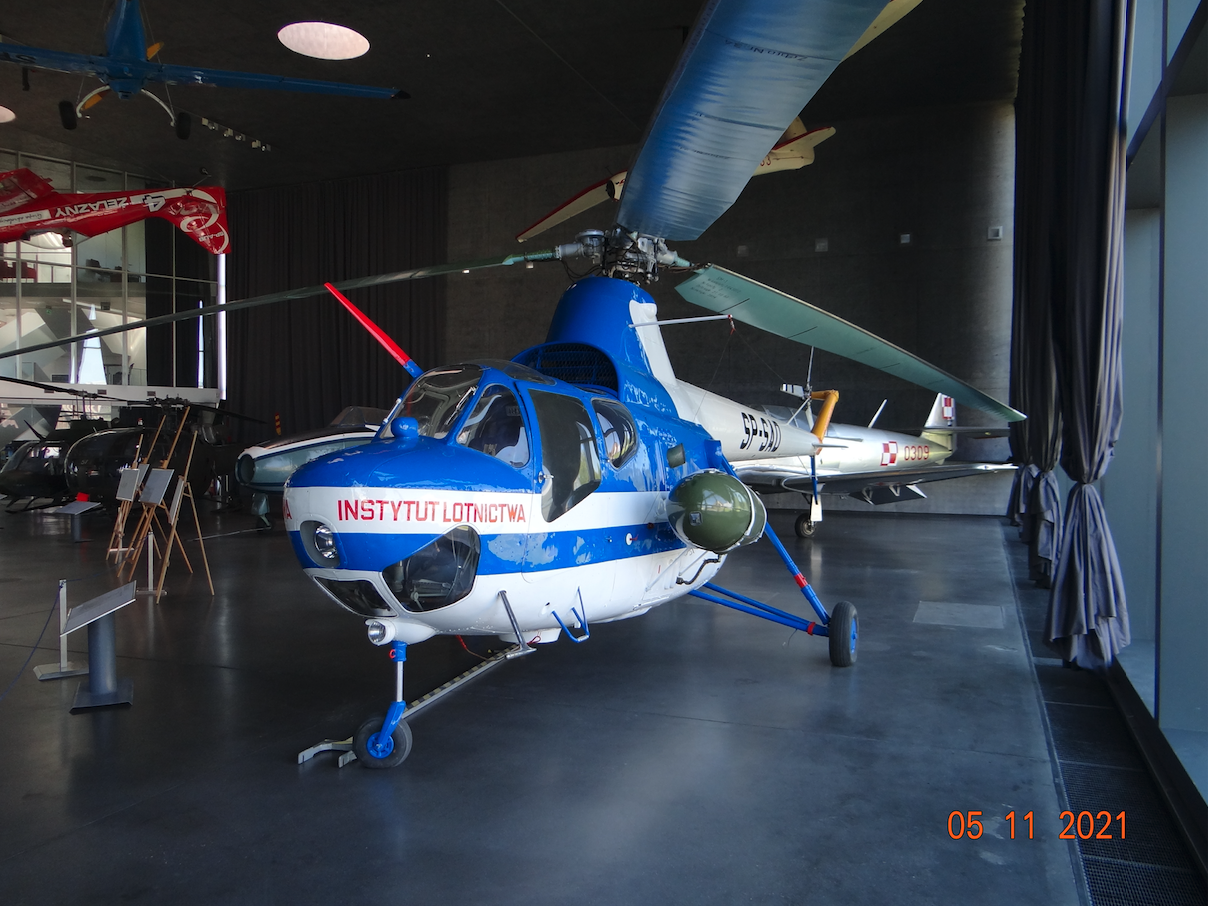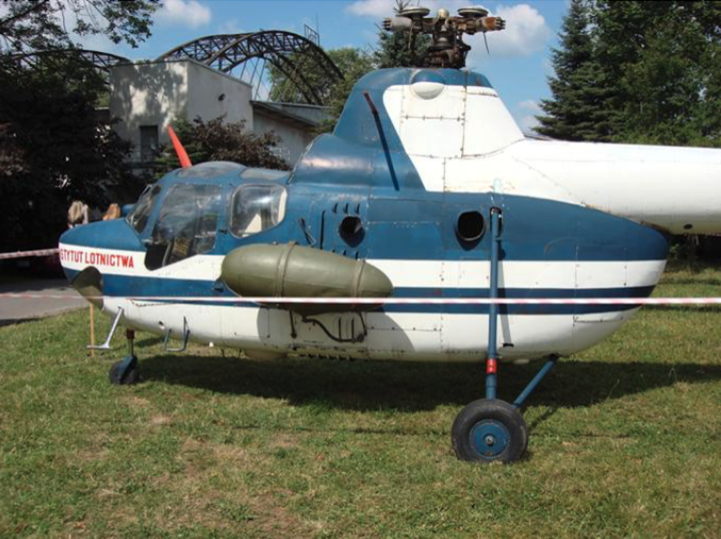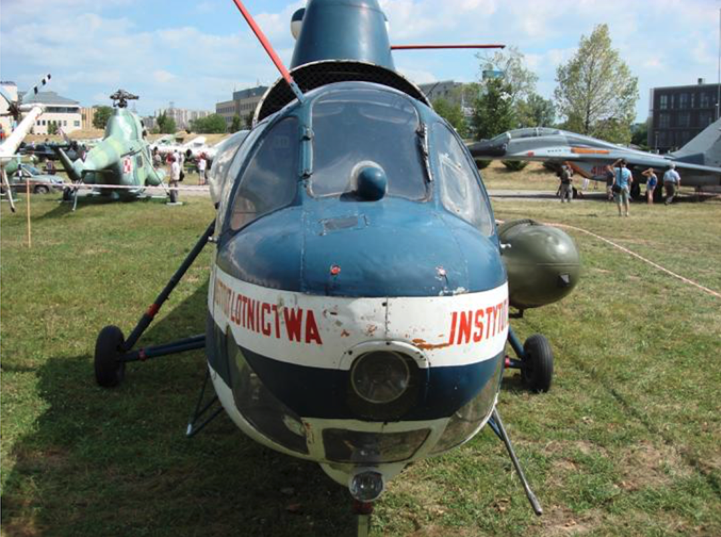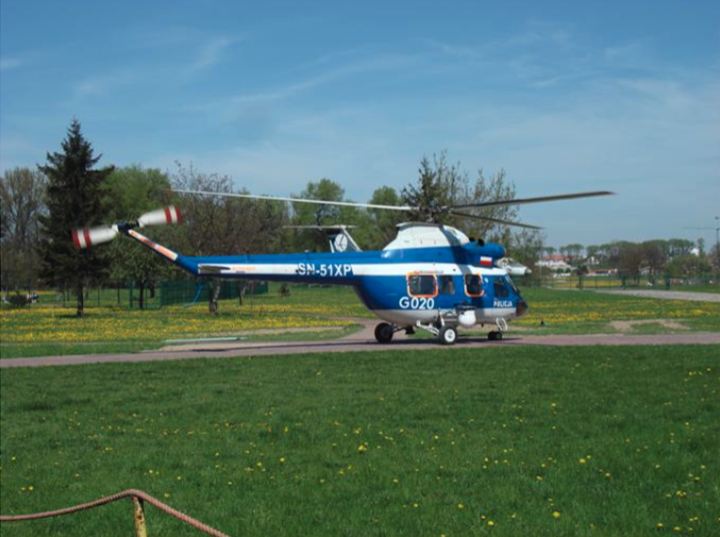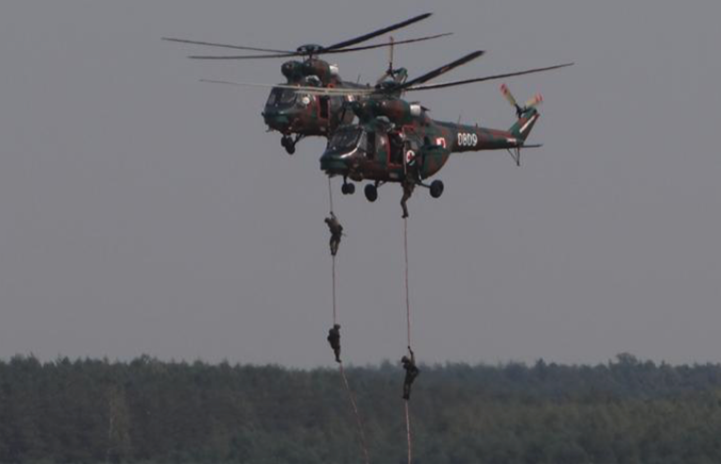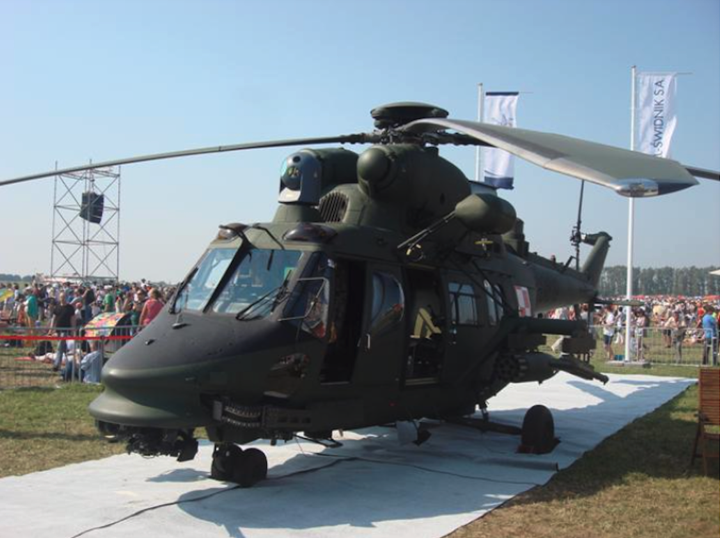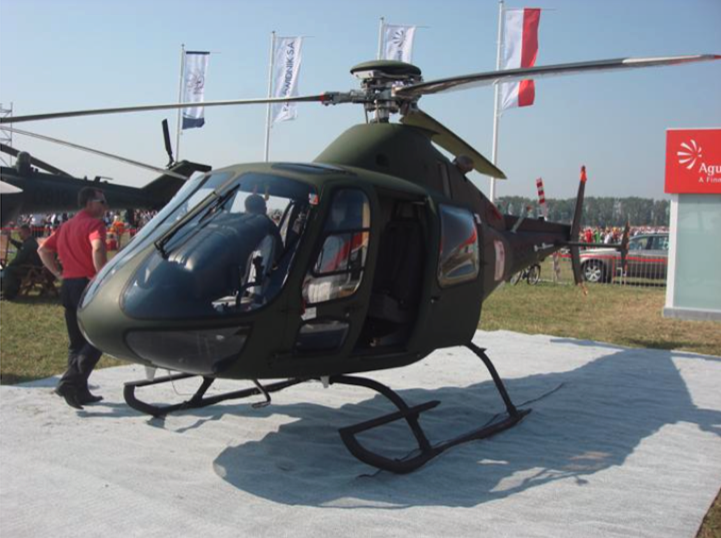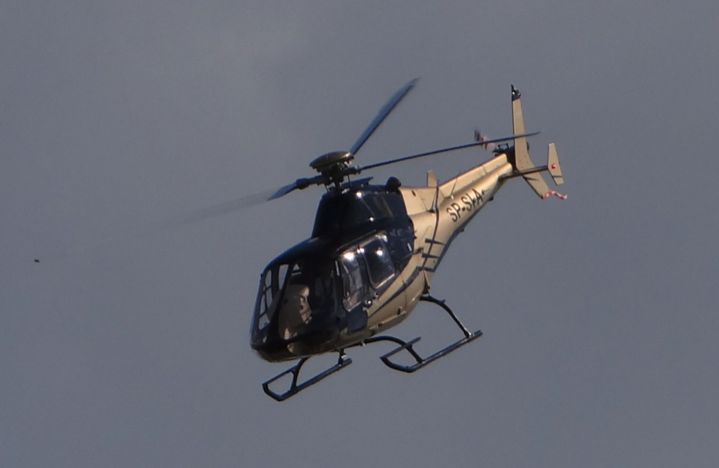Świdnik 2021-01-12
WSK PZL Świdnik.
Lotnisko w Świdniku koło Lublina powstało w 1934 roku. Stało się to po zwycięstwie kapitana pilota Jerzego Bajana w IV Międzynarodowych Turystycznych Zawodach Lotniczych Challenge International Tourisme w 1934 roku na RWD-9. Samolot ten został zakupiony z dobrowolnych składek mieszkańców Lubelszczyzny. Przy lotnisku powstała Szkoła Pilotów, którą kierował Zarząd Główny Ligi Obrony Powietrznej i Obrony Przeciwgazowej (LOPP). Powstały nowoczesne obiekty szkolne, hangary, baza paliwowa oraz budynek administracyjno-internatowy. Lotnisko i szkoła zostały zniszczone przez Niemców podczas II wojny światowej.
Pod koniec 1948 roku, komunistyczne władze w Polsce podjęły decyzję o budowie fabryki samolotów w Świdniku. Głównym inicjatorem było ówczesne „Ministerstwo Przemysłu i Handlu”. Prace projektowe rozpoczęto w pierwszej połowie 1949 roku, a pierwsze założenia opracowano w kwietniu-czerwcu 1949 roku. Projekt wykonał „Oddział Inwestycji i Przebudowy Fabryki Urządzeń Komunikacyjnych – Warszawa Okęcie”, który jest głównym inwestorem. w odbudowie i rozwoju krajowego przemysłu lotniczego. Założenia projektu 30 czerwca 1949 roku, zostały przesłane do „Biura Projektowego Zakładów Przemysłowych Prozamet” w Gliwicach, gdzie rozpoczęto prace nad wykonaniem dokumentacji technicznej dla „Zakładu nr 5” w Świdniku.
Przy realizacji projektów technicznych i budowlanych od maja 1950 roku. Grupie konstruktorów towarzyszyły: „Katedra Mechaniki Konstrukcji Politechniki Gdańskiej i Poznańskiej”, „Warszawskie Biuro Projektów Budowlanych”.
W sierpniu 1949 roku, pierwsi robotnicy budowlani zaczęli przyjeżdżać do małej miejscowości wypoczynkowej koło Lublina. To był początek fabryki i miasta. Lokalizacja lotniska, linii kolejowej, dogodne położenie w pobliżu Lublina oraz względy polityczno-społeczne determinowały tę lokalizację.
Aby przyspieszyć budowę fabryki, postanowiono zdemontować dwa hangary na Lotnisku Krzesiny i przetransportować je do Świdnika i ponownie zmontować tutaj. Hale produkcyjne powstały w 1952 roku. W 1953 roku hale produkcyjne były już wyposażone w maszyny i urządzenia. Funkcjonowały już obiekty pomocnicze i usługowe. Najwięcej prac budowlanych wykonano w okresie 1950 – 1953.
W dniu 1 stycznia 1951 roku, Centralny Zarząd Przemysłu Urządzeń Transportowych w Warszawie na podstawie Uchwały Rady Ministrów i Rozporządzenia Ministra Przemysłu Ciężkiego (z dnia 14 grudnia 1950 roku) powołał WSK nr 5 w Świdniku. . Pełna nazwa – Wytwórnia Sprzętu Komunikacyjnego Przedsiębiorstwo Państwowe Wyodrębnione – Świdnik k. Lublina.
Od 1951 roku Port Lotniczy Świdnik działa jako przedsiębiorstwo.
Fabryka PZL Świdnik i lotnisko znajdowały się na terenie przedwojennej Szkoły Pilotów oraz Lotniska i okolicznych lasów. Teren jest zbliżony do prostokąta. Od południa ogranicza go linia kolejowa Lublin-Chełm oraz ul. Żwirki i Wigury. Ulica Lotnicza od strony zachodniej. Ulica Mełgiewska od północy. Od wschodu miasto Franciszkanów.
Pierwsze produkty WSK PZL Świdnik.
W 1951 roku, fabryka otrzymała zadanie uruchomienia produkcji metalowego myśliwca MIG-15 na licencji radzieckiej z silnikiem turboodrzutowym pod nazwą Lim-1. Po przedłożeniu dokumentacji licencyjnej MIG-15, która obejmowała: kompletne rysunki konstrukcyjne, szczegółowe procesy technologiczne, rysunki oprzyrządowania i narzędzi, warunki techniczne, normy i inne procesy pomocnicze, przystąpiono do tłumaczenia tych materiałów i adaptacji do warunków lokalnych. W tym samym czasie ta sama produkcja została uruchomiona w WSK Mielec, gdzie odbywały się również tłumaczenia i szkolenia pracowników WSK Świdnik.
Jednak pod koniec 1952 r. Ówczesny Centralny Zarząd Przemysłu Urządzeń Łączności dokonał znaczących zmian w strukturze produkcyjnej WSK Świdnik. Zdecydowano, że Świdnik z finalnego zakładu stanie się kooperantem dla fabryki w Mielcu. Należy pamiętać, że w tym czasie Mielec posiadał znacznie bardziej rozbudowaną infrastrukturę. Świdnik był w produkcji; skrzydła, balasty, łożyska silnika, laweta i siedzenia pilota. W 1952 roku wyprodukowano pierwsze skrzydła i ogon, które trafiły do WSK PZL Mielec, gdzie odbył się montaż tych samolotów o nazwie Lim-1. W związku z masową produkcją zdecydowano w 1953 roku, że Świdnik będzie produkował także tylne części kadłuba tych myśliwców.
Jeszcze w 1953 roku fabryka prowadziła wstępne badania nad możliwym uruchomieniem produkcji samolotu szkolno-treningowego TS-8 Bies. Planowano również rozpoczęcie produkcji sprężarek chłodniczych. Jednak zadania te nie zostały zrealizowane. Lodówki wyprodukowano w Krośnie.
W dniu 11 października 1952 r. Pod nazwą Aeroklub Fabryczny został oficjalnie zarejestrowany aeroklub świdnicki w Warszawie, który korzystał z lotniska spółki. Po 13-letniej przerwie w Świdniku piloci ponownie przeszli szkolenie.
WSK PZL Świdnik. 1954 rok.
W 1954 r. Władze komunistyczne wyznaczyły PZL Świdnik jako pierwszego i jedynego producenta śmigłowców. Helikopter stał się symbolem miasta. W tym samym czasie planowano produkcję motocykli.
Należy pamiętać, że produkcja helikopterów w Polsce bardzo uszlachetniła nasz kraj. W końcu historia użytecznego helikoptera na świecie miała zaledwie 10 lat. Oczywiście odnieśliśmy duże sukcesy na tym polu, ale uzależnieni od woli CCCP byliśmy na ich łasce. Niewydolna gospodarka radziecka nie była w stanie podjąć się masowej produkcji śmigłowców Mi-1. CCCP musiało mieć rezerwy na rozwój większych konstrukcji. Dlatego Polska zleciła seryjną produkcję śmigłowca Mi-1. Podobnie jak w przypadku uruchomienia seryjnej produkcji Lim-1 (MiG-15), konieczne było przetłumaczenie rosyjskiej dokumentacji na język polski i dostosowanie jej do możliwości polskiej gospodarki.
W 1956 roku pierwsze cztery śmigłowce Mi-1 (znane jako SM-1) opuściły fabrykę, zmontowane z części sprowadzonych z CCCP. Pierwszy lot śmigłowców odbył się latem 1956 roku. Produkcję rozpoczęto w 1957 roku. Polska była wówczas jednym z nielicznych krajów na świecie, w których opanowano tego typu produkcję. W grupie kopii helikopterów było tylko sześć krajów.
Po rozwiązaniu podstawowych problemów związanych z uruchomieniem produkcji śmigłowców SM-1 inżynierowie przystąpili do prac nad uruchomieniem produkcji motocykla MO6 z silnikiem o pojemności 125 cm3.
W 1955 roku zakład WSK Świdnik wyprodukował 3 126 motocykli WSK model MO6, które w trakcie produkcji były systematycznie modernizowane. Następnie powstało więcej modeli. Motocykl MO6 należy do kultowych motocykli polskiej motoryzacji.
W kolejnych latach firma rozwijała swoją produkcję. Rezultatem jest cała rodzina płatowców: SM-1 w śmigłowcach sanitarnych, szkolnych, dźwigowych, rolniczych oraz uniwersalnych SM-2. Śmigłowiec SM-2 to znacznie zmodernizowany SM-1 z powiększoną kabiną. W sumie zbudowano 1800 śmigłowców SM-1 i SM-2. To była ogromna liczba. Większość tych helikopterów trafiła do CCCP i innych krajów komunistycznych.
28 września 1957 r. Odbyła się uroczystość nadania fabryce imienia znanego polskiego inżyniera lotnictwa Zygmunta Puławskiego. Odtąd pełna nazwa zakładu brzmi: Wytwórnia Sprzętu Komunikacyjnego im. Zygmunta Puławskiego „PZL-Świdnik”.
W 1958 r. Przed bramą fabryki ustawiono cokół, z którego wykonano na metalu model myśliwca P-7 projektu Zygmunta Puławskiego. W 2012 roku samolot ten został odrestaurowany i trafił pod dach do nowego terminalu lotniska na Lotnisku Świdnik.
PZL Mi-2.
W 1963 roku powtórzyła się sytuacja z 1954 roku, kiedy zlecono Polsce budowę śmigłowców SM-1 (Mi-1). Tym razem CCCP zleciło Polsce produkcję śmigłowców Mi-2. Co ważne, ten radziecki śmigłowiec został zbudowany wyłącznie w PZL Świdnik. Nawet Sowieci używali śmigłowców Mi-2 z Polski. Ich przemysł nie mógł zająć się budową tych maszyn, ponieważ ich zakłady były obciążone produkcją samolotów bojowych. Sowieci nie zgodzili się na nadanie helikopterowi polskiego oznaczenia; SM-3.
Mi-2 to 9-miejscowy śmigłowiec o masie całkowitej 3550 kg. Napędzany dwoma silnikami turbinowymi GTD-350 o mocy 2 x 400 KM lub GTD-350W o mocy 2 x 425 KM.
Budowę pierwszych śmigłowców rozpoczęto w 1964 r. W 1965 r. Pierwszy lot wykonał śmigłowiec Mi-2. Łącznie wyprodukowano 5450 śmigłowców Mi-2. Większość maszyn została wyeksportowana do CCCP. W Polsce śmigłowce te były używane w Wojsku Polskim i gospodarce narodowej w wielu wersjach i wariantach.
W latach 60-tych XX wieku WSK Świdnik był przedsiębiorstwem wielozakładowym, w skład którego weszły: zakład macierzysty w Świdniku wraz z Zakładem Produkcji Lotniczej, Zakład Produkcji Motoryzacji, Dział Usług Apollo, Centrum Badawczo-Rozwojowe Urządzeń Komunikacyjnych oraz Zakład założony w 1969 roku w Tomaszowie Lubelskim. Ponadto produkowano WSK Świdnik; pompy, sprzęgła, odkuwki, wózki inwalidzkie, przyczepy samochodowe.
Firma WSK Świdnik była również producentem (od 1967 r.) Pomp i sprzęgieł do samochodów ciężarowych i autobusów „Jelcz” na licencji „Berliet” oraz zbiorników chłodniczych na podwoziach samochodów „Star” i „Jelcz”.
Rozporządzenie Ministra Przemysłu Maszynowego powstało 17 sierpnia 1967 r. W WSK Świdnik – Zakład Doświadczalny Budowy Śmigłowców. Funkcjonowanie zakładu doświadczalnego wiązało się z realizacją tematów unowocześniających i rozwijających wytwarzane wyroby budowlane, wprowadzaniem nowych wersji. Zadania te były realizowane wspólnie z; Moscow Helicopter Company, Instytut Lotnictwa, Politechnika Warszawska, Politechnika Krakowska, Uniwersytet Marii Curie-Skłodowskiej, Wojskowa Akademia Techniczna.
Następnie, na podstawie Rozporządzenia Ministra Przemysłu Maszynowego z dnia 18 marca 1972 roku, Wydział Doświadczalny WSK został przekształcony w Ośrodek Badawczo-Rozwojowy Urządzeń Komunikacyjnych (OBR). Profil działalności ośrodka, na tle bazy badawczo-rozwojowej przemysłu lotniczego, koncentrował się głównie na kompleksowych pracach badawczo-rozwojowych, konstrukcyjnych, technologicznych, projektowych i doświadczalnych w zakresie śmigłowców i motocykli.
Przy udziale OBR i Zakładu Terenowego w Tomaszowie Lubelskim oraz Zakładu Terenowego w Lubowidzu realizowana była produkcja wyrobów motoryzacyjnych. Zakład w Tomaszowie Lubelskim produkował głównie części i zespoły motocyklowe, natomiast zakład w Lubowidzu z elementów lotniczych wykonanych z laminatów.
W latach 1972-1977 w WSK PZL Świdnik uruchomiono i prowadzono produkcję szybowca wyczynowego SZD-30 Pirat. Po wyprodukowaniu tych śmigłowców w Świdniku produkcja została przeniesiona do SZLS Delta Bielsko Biała, skąd pochodziła budowa tego szybowca. W Świdniku budowano także szybowce; PW-5, PW-6.
Lata 70. to okres względnego otwarcia polskiej gospodarki na wolny świat. Stało się jasne, że nie możemy eksportować na Zachód śmigłowców Mi-2 wyposażonych w napęd wschodni. (Przyczyną było zbyt duże zużycie paliwa). Dlatego grupa polskich inżynierów zdecydowała się na adaptację zachodnich silników. Udało nam się nawiązać współpracę z Allison. Tak powstał śmigłowiec PZL-Kania, przypominający Mi-2, ale tylko płatowiec. Napęd stanowią dwa silniki Allison 250-C20B o mocy 2 x 426 KM. Masa MTOW 3550 kg. Pojemność 10 osób. Urządzenia radiowe i nawigacyjne Bendix / King. Nowe podwozie.
Ze względu na słabe finansowanie prace badawczo-rozwojowe nad śmigłowcem PZL Kania trwały stosunkowo długo. W 1986 roku śmigłowiec otrzymał krajowy certyfikat typu.
Równolegle ze śmigłowcem PZL Kania w 1978 roku opracowano podobny śmigłowiec oznaczony jako PZL Taurus. Ten helikopter został opracowany specjalnie na rynek północnoamerykański. Był wyposażony w te same silniki co PZL Kania. Miał jednak inne instalacje i wyposażenie. Zmieniony został również system chwytu powietrznego i chłodzenia silnika.
PZL Sokół
W 1974 roku Ministerstwo Przemysłu zezwoliło na rozpoczęcie prac nad śmigłowcem PZL Sokół. Był to przełomowy moment w historii Centrum Badawczo-Rozwojowego firmy. Oficjalnie miała to być powiększona wersja śmigłowca Mi-2, opracowana wspólnie z OKB Mila. W rzeczywistości PZL Sokół to oryginalna polska konstrukcja inżyniera Stanisława Kamińskiego. Prototyp nieskazitelnego lotu wykonano 16 listopada 1979 roku. Jednak oficjalny lot odbył się 6 maja 1982 roku.
Głównym problemem w rozwoju konstrukcji było niskie finansowanie projektu, co wydłużyło prace. Konstrukcja śmigłowca wyróżniała się wieloma nowoczesnymi rozwiązaniami, które zostały docenione na całym świecie. Opracowano dwuosiowy system stabilizacji, który wcześniej nie był używany. Instalacja przeciwoblodzeniowa została zaprojektowana jako system kompleksowy.
PZL Sokół to konstrukcja przeznaczona dla 14 osób. Masa MTOW 6400 kg. Napędzany dwoma silnikami PZL 10W, moc 2 x 662 kW. Silniki te oparte są na silnikach lotniczych napędzających samoloty transportowe PZL M-28.
PZL Sokół to śmigłowiec wielozadaniowy, produkowany w wielu wersjach; pasażerski, VIP, transportowy, dźwigowy, policyjny, sanitarny, medyczny, ratownictwo górskie, ratownictwo morskie, bojowe. PZL Sokół otrzymał certyfikaty FAR-29 wydane przez organy dozoru lotniczego: Polskę, Rosję, Niemcy, USA i Hiszpanię.
W 1976 roku w WSK Świdnik rozpoczęto produkcję podzespołów radzieckiego samolotu pasażerskiego Aerobus IŁ-86 (później także samolotu IŁ-96): sterów kierunku i wysokości oraz lotek. Zakłady PZL Mielec zajmowały się również budową podzespołów do samolotu Ił-86. Wprowadzono nowe technologie dla zakładu: klejenie elementów wielkogabarytowych oraz obróbkę skomplikowanych kształtów. Efektem tej współpracy było późniejsze rozpoczęcie w Świdniku produkcji kadłuba samolotu An-28, późniejszego M-28, którego główna produkcja znajdowała się w PZL Mielec.
Do początku lat 80-tych WSK Świdnik wyprodukował łącznie ponad 5 000 śmigłowców Mi-2, ponad 1 600 000 motocykli, ponad 70 000 sprzęgieł.
W 1985 roku z linii montażowej WSK Świdnik zjechał dwumilionowy motocykl. Wśród motocykli była cała rodzina ptaków; Gil, Kobuz, Kos. Napędzane były silnikami spalinowymi o pojemności 125 i 175 cm3. Mimo to w listopadzie 1985 roku zapadła kontrowersyjna decyzja władz Warszawy o zaprzestaniu produkcji motocykli. Ostatnim motocyklem był motocykl Kos o numerze seryjnym 0102083.
W lipcu 1988 roku śmigłowiec PZL Kania, drugi po PZL Sokół, został nagrodzony złotym medalem na Międzynarodowych Targach Poznańskich.
W 1989 roku w Polsce nastąpiły przemiany społeczno-gospodarcze. Miasto Świdnik, jako wiodący ośrodek oddolnej demokratyzacji życia w Polsce, z biegiem czasu odczuwa jedne z największych konsekwencji tych procesów. Przejawiało się to przede wszystkim najwyższym bezrobociem w kraju. Władze centralne miały doskonałą osłonę w postaci hasła – załamanie rynku w CCCP. Jednak niewiele zrobili, aby znaleźć nowe rynki. Wspominam o tym poniżej.
W 1991 roku WSK Świdnik rozpoczął proces przekształcania spółki w jednoosobową spółkę Skarbu Państwa. Był to początek prywatyzacji i jednocześnie likwidacji polskiego przemysłu lotniczego. O takie zmiany nie walczyli pracownicy Świdnika. Pierwszym prezesem zarządu spółki był dyrektor. Mieczysław Majewski.
W marcu 1993 roku powstał szybowiec PW-5, który wygrał zawody Międzynarodowej Federacji Lotniczej na szybowcu światowej klasy. W maju 1993 roku śmigłowiec PZL Sokół uzyskał certyfikat USA, co było dużym sukcesem. Z kolei w listopadzie 1993 roku PZL Sokół otrzymał godło – Teraz Polska.
W latach 1991-1993 miał miejsce szereg zwolnień grupowych z pracy w WSK Świdnik. Na początku 1991 roku zwolniono 750 osób. W lipcu 1991 r. Kolejnych 600 pracowników. Na początku 1993 roku WSK PZL-Świdnik SA zatrudniała 5 077 pracowników.
W połowie lat 90-tych XX wieku było wiadomo, że PZL Świdnik, jeśli chce funkcjonować, musi polegać na własnych siłach. Pierwszym krokiem było zdobycie wszystkich możliwych certyfikatów produkcyjnych dla każdego. W 1994 roku wdrożono system zapewnienia jakości ISO9001. W 2000 roku firma uzyskała certyfikat systemu jakości AQAP-110 (norma NATO) oraz certyfikat zdolności produkcyjnej i projektowania zgodnego z normą JAR-21. Certyfikaty te pozwoliły na nawiązanie współpracy z dużymi firmami zagranicznymi, w tym Aerospatiale, przy produkcji centrum pasażerskiego samolotu pasażerskiego ATR-72. Podwykonawcą został PZL Świdnik z fabryki wyrobów gotowych. Nawiązano współpracę z takimi firmami jak; Eurocopter, Agusta, Latecoere, Dassault, Ratier-Figeac, Snecma, Boeing. Zakład zaczął produkować konstrukcje powietrzne: kadłuby i elementy kadłuba, centropady, mechanizmy drzwi, stery, wykładziny ognioodporne. Firma oferowała również szeroki zakres usług produkcyjnych: obróbka skrawaniem, obróbka okładzin (anodowanie chromowe elementów i konstrukcji aluminiowych), konstrukcje spawane, klejenie metali i kompozytów, produkcja odkuwek.
PZL SW-4 Puszczyk.
Już na początku lat 80-tych XX wieku zauważono, że śmigłowiec Mi-2 w większości zadań jest konstrukcją zdecydowanie zbyt ciężką. Z kolei SM-2 ma za sobą lata. W 1981 roku podczas Międzynarodowych Zawodów Śmigłowcowych w Piotrkowie Trybunalskim reprezentacja CCCP pojawiła się na maszynach Mi-1 wzbudzając śmiech i współczucie. Podczas gdy w tym czasie inne helikoptery w powietrzu zrobiły nawet pętlę, śmigłowiec Mi-1 ledwo kołysał się na boki.
Prace nad nowym lekkim polskim śmigłowcem rozpoczęto w PZL Świdnik w 1986 roku. W 1987 roku zbudowano model. Program borykał się z brakami środków i co jakiś czas miał wątpliwości. Niemniej 29 października 1996 roku prototyp SP-PSW wykonał pierwszy lot. W 1998 roku uruchomiono drugi prototyp, na rejestracji SP-PSZ. W 2002 roku śmigłowiec otrzymał polski certyfikat, oparty na przepisach lotniczych JAR-27. W 2003 roku Wojsko Polskie zamówiło jeden egzemplarz z zamiarem zakupu kolejnych 30 maszyn. Dzięki temu śmigłowiec SW-4 otrzymał certyfikat EASA uprawniający do sprzedaży i użytkowania w Europie. Procedura certyfikacji śmigłowca SW-4 została przeprowadzona na zlecenie Agencji przez specjalistów z Wielkiej Brytanii.
Śmigłowiec SW-4 to lekka, wielofunkcyjna maszyna napędzana silnikiem turbinowym Rolls-Royce 250 C20R / 2 (SP) o mocy 457 KM. Masa MTOW 1800 kg. Śmigłowiec zabiera na pokład maksymalnie 5 osób lub pilota i 550 kg ładunku. Wersja osobowa posiada bagażnik na 150 kg ładunku o pojemności 0,85 m3. Jego maksymalna prędkość to 260 km / h, a zasięg – przy podstawowym zbiorniku paliwa to prawie 800 km. SW-4 zużywa około 100 litrów paliwa na godzinę lotu. Cena helikoptera (2005 r.) Na rynku cywilnym wynosiła około 750 000 USD.
Dalsza historia WSK PZL Świdnik.
Do 2005 roku w Świdniku zbudowano ponad 7200 sztuk śmigłowców. I choć w ostatnich latach tempo produkcji drastycznie spadło, to należy przypuszczać, że helikoptery i inna produkcja lotnicza będzie tu nadal produkowana.
Od 29 stycznia 2010 r. Agusta Westland została większościowym udziałowcem PZL-Świdnik SA. W Świdniku rozpoczęto produkcję śmigłowców AW 149.
Co wpłynie na dalszy rozwój PZL Świdnik, to się dopiero okaże. Niemniej szansa na dalsze funkcjonowanie jest duża, choć znak PZL może zniknąć.
Dodatkowo w ostatnim czasie Wojsko Polskie stoi przed koniecznością wymiany śmigłowców bojowych Mi-24 na nowe. Jest dwóch konkurentów; Agusta Westland i Sikorsky.
Opracował Karol Placha Hetman

